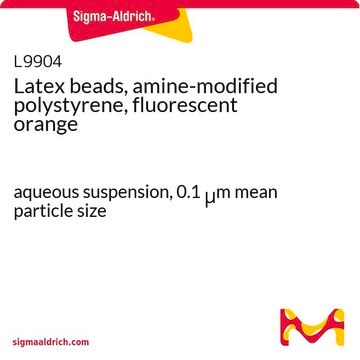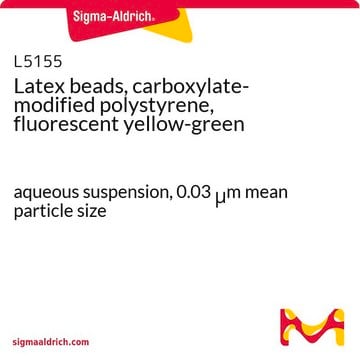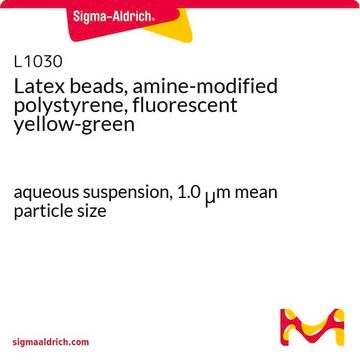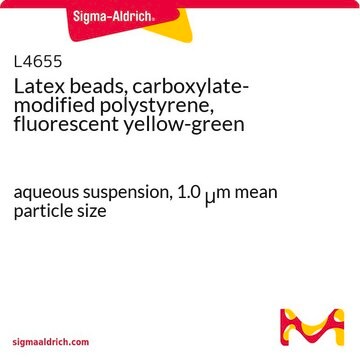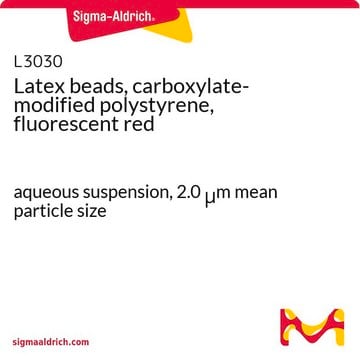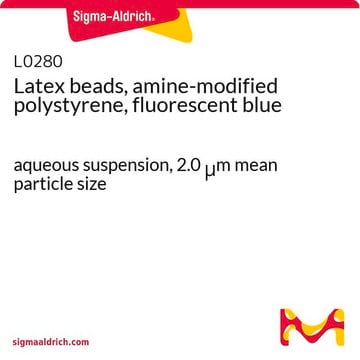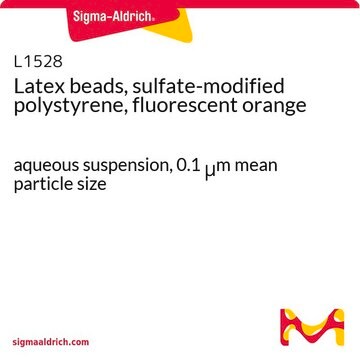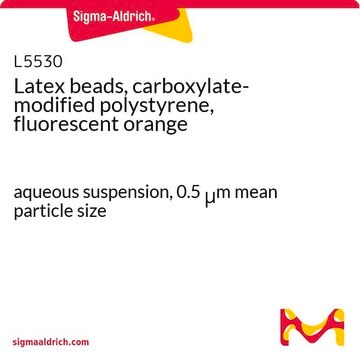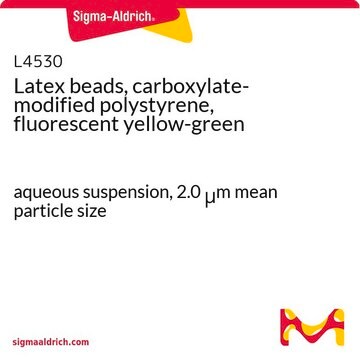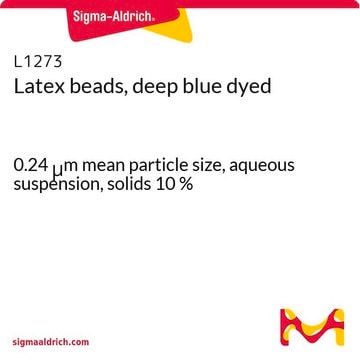The amine-modified polystyrene latex beads are suspended in distilled water with a minimum amount of proprietary cationic surfactant (0.2%). The concentration of solids (plastics) is >/= 2.5%.
L0780
Latex beads, amine-modified polystyrene, fluorescent blue
aqueous suspension, 0.05 μm mean particle size
Größe auswählen
CHF 80.40
Voraussichtliches Versanddatum28. März 2025
Größe auswählen
About This Item
CHF 80.40
Voraussichtliches Versanddatum28. März 2025
Empfohlene Produkte
Form
aqueous suspension
Qualitätsniveau
Zusammensetzung
Solids, 2.5%
Methode(n)
cell based assay: suitable
Mittlere Partikelgröße
0.05 μm
Fluoreszenz
λex ~360 nm; λem ~420 nm
Anwendung(en)
cell analysis
Suchen Sie nach ähnlichen Produkten? Aufrufen Leitfaden zum Produktvergleich
Anwendung
Biochem./physiol. Wirkung
Lagerklassenschlüssel
10 - Combustible liquids
WGK
WGK 3
Flammpunkt (°F)
Not applicable
Flammpunkt (°C)
Not applicable
Hier finden Sie alle aktuellen Versionen:
Besitzen Sie dieses Produkt bereits?
In der Dokumentenbibliothek finden Sie die Dokumentation zu den Produkten, die Sie kürzlich erworben haben.
Kunden haben sich ebenfalls angesehen
-
What will be the concentration of plastics in 1ml? Can I add distilled water to make stock solution?
1 answer-
Helpful?
-
Active Filters
Unser Team von Wissenschaftlern verfügt über Erfahrung in allen Forschungsbereichen einschließlich Life Science, Materialwissenschaften, chemischer Synthese, Chromatographie, Analytik und vielen mehr..
Setzen Sie sich mit dem technischen Dienst in Verbindung.
